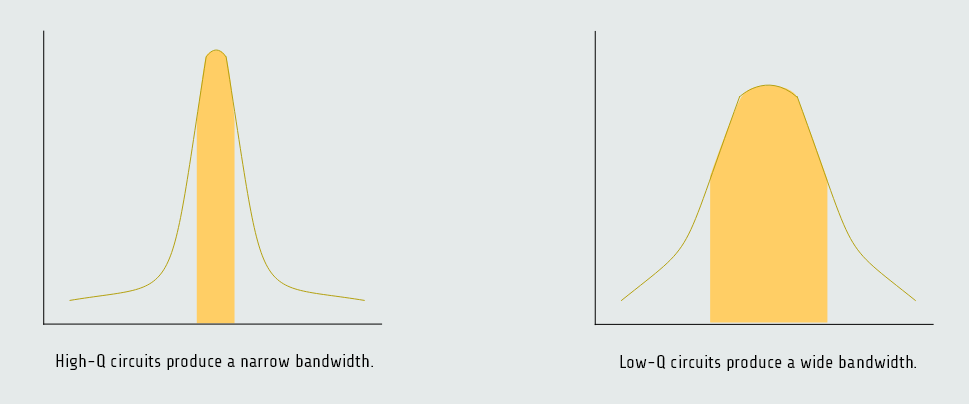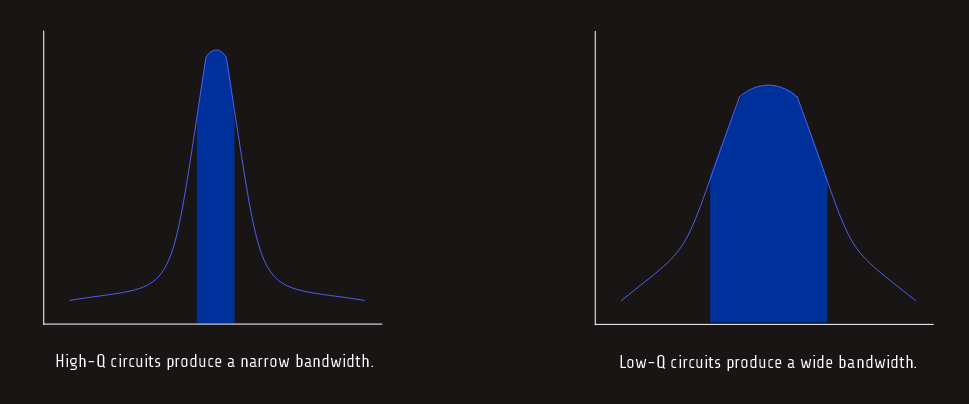RLC parallel circuit
When an AC circuit contains elements of resistance, inductance, and capacitance connected in parallel, the voltage dropped across each element is the same. The currents flowing through each branch will be out of phase with each other. 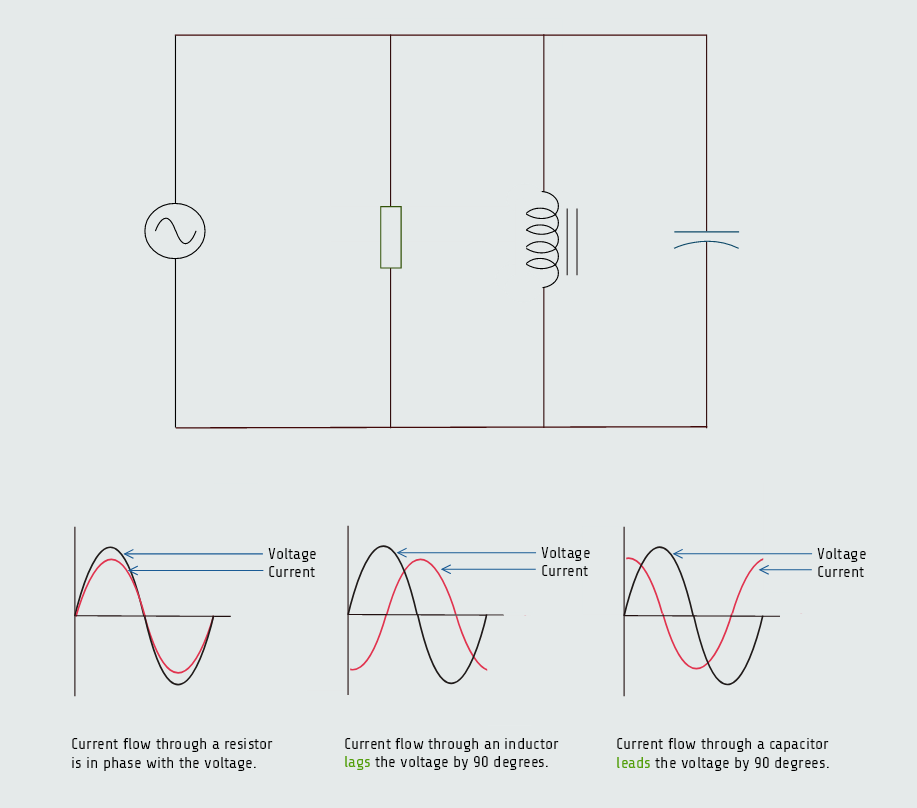
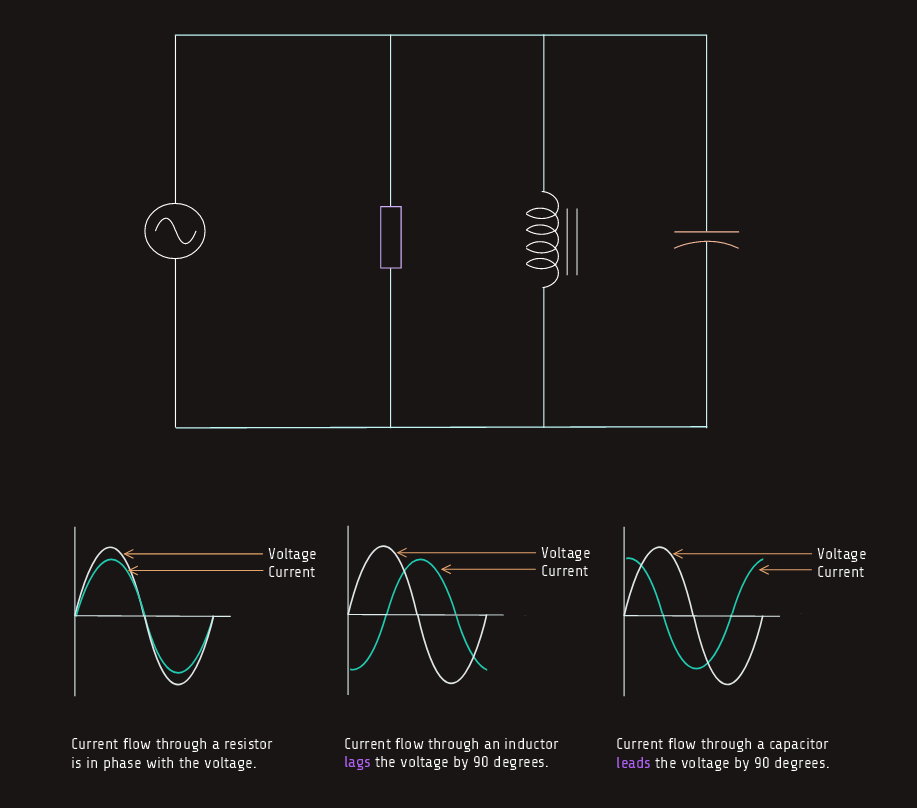
Impedance
The impedance of the circuit is the reciprocal of the sum of the reciprocals of the legs. Since these values are out of phase with each other, vector addition must be used and we have:
Z = 1/√((1/R)2 + ((1/XL)-(1/XC))2)
The amount of total current flow in the circuit can be computed by vector addition of the current flowing through each leg of the circuit. The inductive current is 180° out of phase with the capacitive current. These two currents tend to cancel each other, resulting in the elimination of the smaller and reduction of the larger. The total circuit current is the hypotenuse of the resulting right triangle. 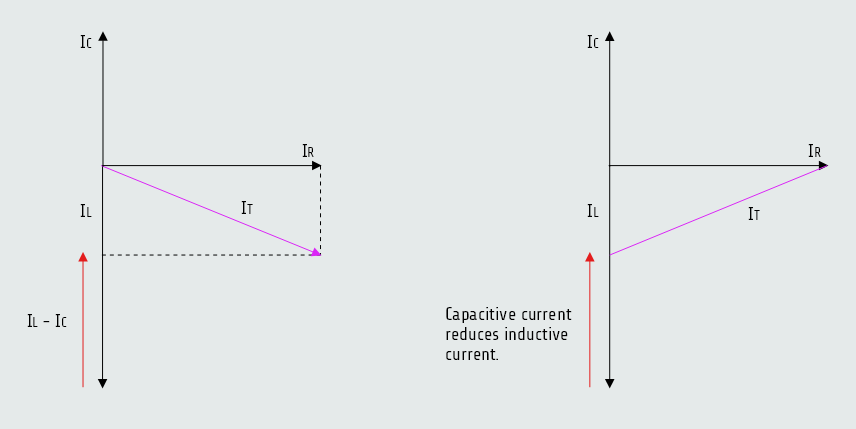
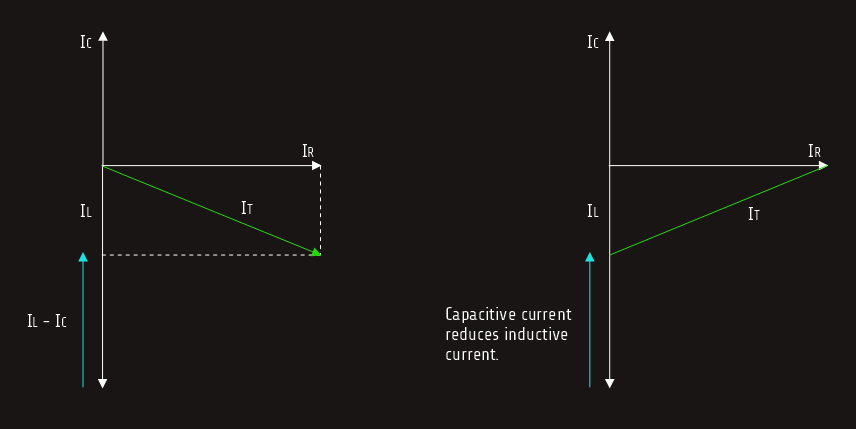
IT = E/Z
The apparent power or VAs, can be found using the formula:
VA = E x IT
VA = √(P2 + (VARsL-VARsC)2)
The power factor is PF = W/VA x 100 [%] and for angle θ we know that cos ∠θ = PF.
When values of inductive reactance and capacitive reactance become equal, they are said to be resonant. In a parallel circuit, inductive current and capacitive current cancel each other because they are 180° out of phase with each other. This produces minimum line current at the point of resonance. An LC parallel circuit is often referred to as tank circuit.
Computing the values for a parallel resonant circuit is a bit more involved than computing the values for a series resonant circuit. In theory, when a parallel circuit reaches resonance, the total circuit current should reach zero and total circuit impedance should become infinite because the capacitive current and inductive currents cancel each other. In practice, the quality (Q) of the circuit components determines total circuit current and, therefore, total circuit impedance, Q = ITANK/ILINE .
The amount of current circulating inside the tank is equal to the product of the line current and the Q of the circuit.
Graphs illustrating the decrease of current and increase of impedance in a parallel resonant circuit are shown in figures below.
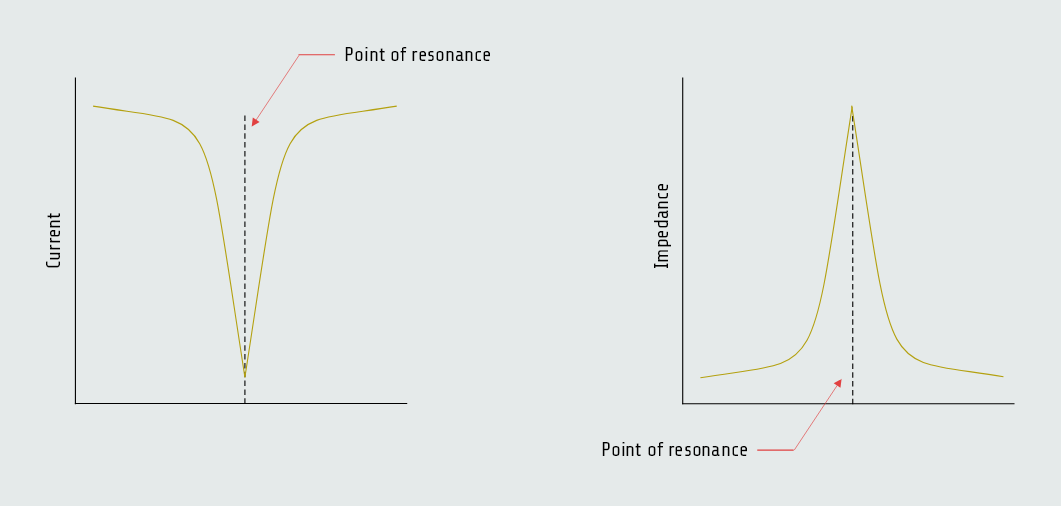
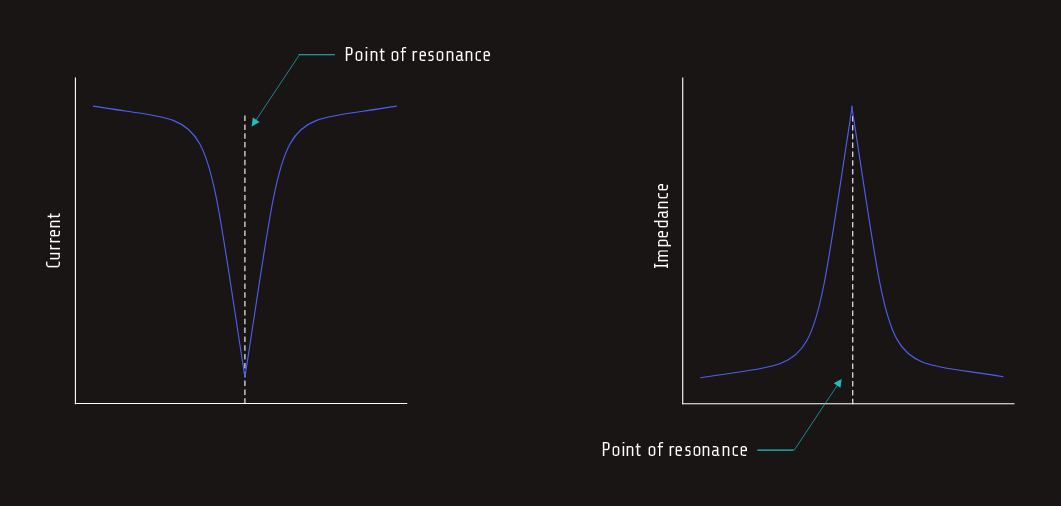
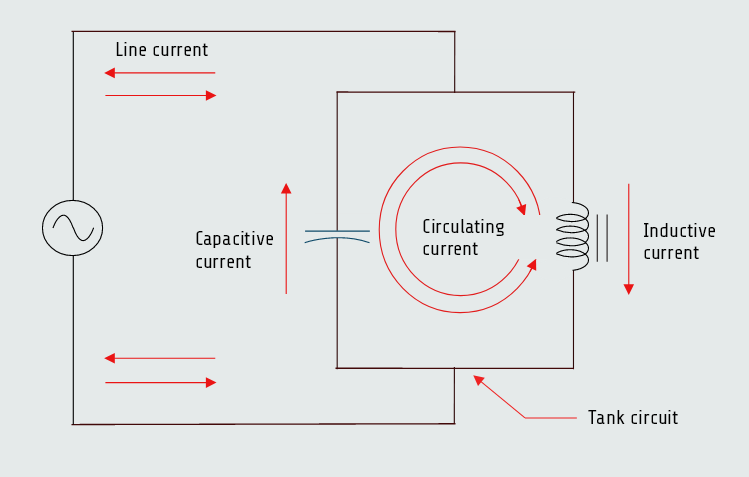
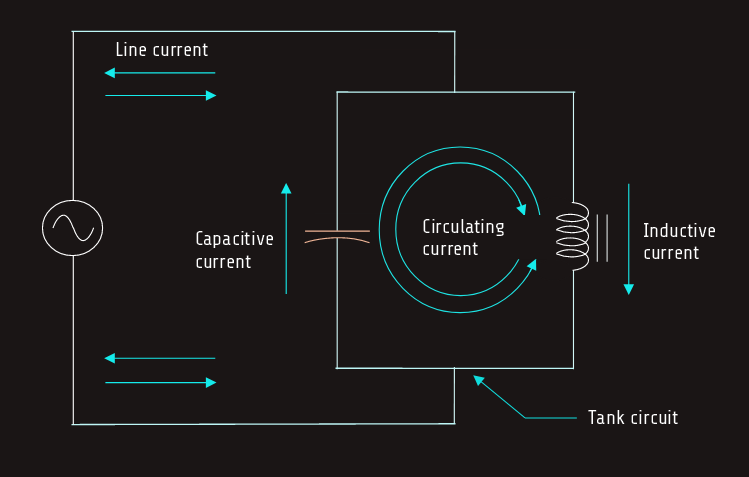
Bandwidth
The bandwidth for a parallel resonant circuit is determined in a manner similar to that used for a series resonant circuit. The bandwidth of a parallel circuit is determined by computing the frequency on either side of resonance at which the impedance is 0.707 of maximum.
As in series resonant circuits, the Q of the parallel circuit determines the bandwidth.
Circuits that have a high Q will have a narrow bandwidth, and circuits with a low Q will have a wide bandwidth.
